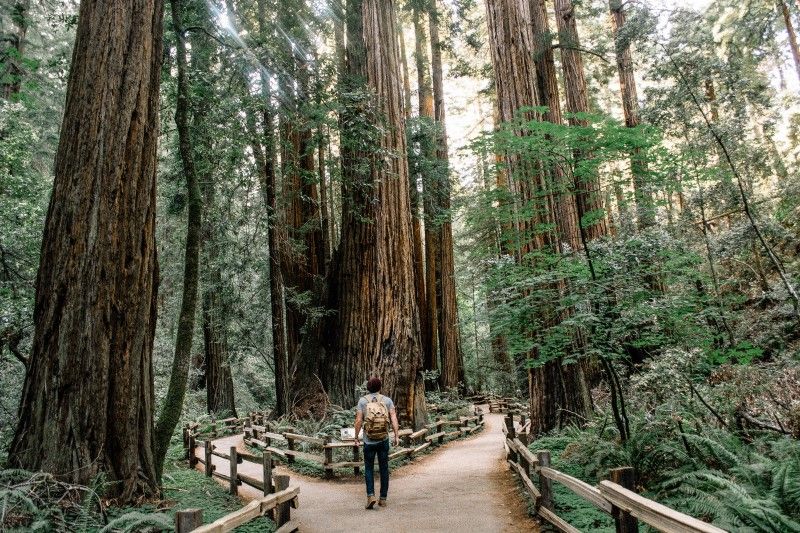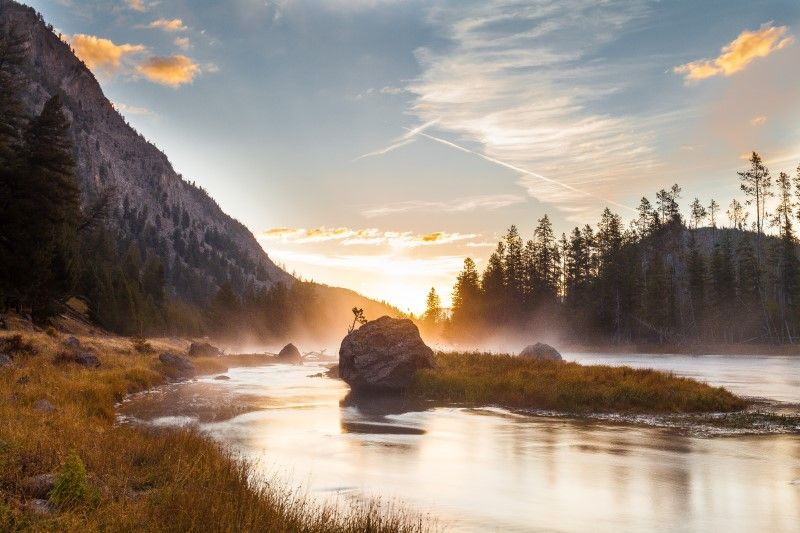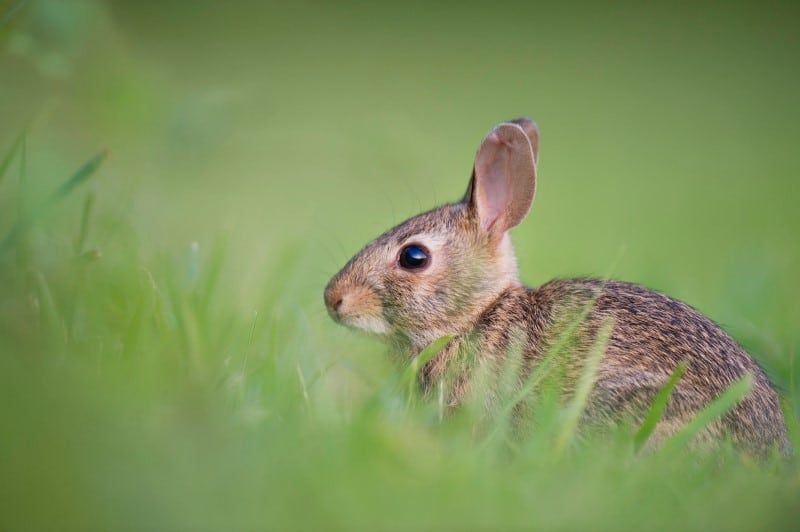Blazing Star. Prairie Smoke. Vanilla Sweet Grass. The poetic names seem fitting for a candle collection at Bath & Body Works. The reality is more practical. These are the names of common prairie plants where I live, but I can’t identify them. As a suburban-born kid, botany was never my strength.
Now on a local hiking trail, the summer prairie pulses with energy and color, thick with bees. To my untrained eye, it’s a bewildering tangle of flowers. But I have a guide. I feel self-conscious though, glad my wildflower guidebook is small and pale green. Perfect camouflage. I have a matching field guide for birds. And another for trees.
I don’t know why I’m embarrassed about needing a book to identify plants, but I am. I think it’s because these are flowers I’ve seen all my life. The yellow ones pop up every spring. The purple ones unfurl each fall. I should know their names by now. I try to keep the book low, out of sight.
As I covertly turn the pages, a woman stops to talk to me anyway. “Which one are you wondering about?” she asks. Busted. She’s dressed for hiking in the traditional style of camp counselors and scoutmasters—a lot of khaki and a canvas bucket hat. I can already tell she knows a lot more than me. I point and she says: “Wild bergamot.”
Then she tells me that some people call it “bee balm,” it’s a member of the mint family—Feel its square stem?—and that if I pinch one of its leaves between my fingers, I’ll notice the familiar sweet scent of Earl Grey tea. (Later I’ll learn that wild bergamot is not actually related to the citrus fruit that gives Earl Grey tea its distinctive flavor. Yet they do share a similar name and scent.)
Soon after the woman leaves, my conspicuous book and confused expression invite another teacher. An older man—a volunteer for the conservancy—ambles down the trail toward me. He carries a weed trimmer and his face shines with sweat.
The man stops, eyeing my book. “Which one?” he asks by way of a greeting. I point. “Culver’s root,” he says, pausing for a breath. “Any more?” I point again, realizing that with my lack of plant knowledge, we could be here all day. He identifies a few more plants for me, then he moves on too.

People say our ancestors knew more about plants than we do. Not my ancestors. Three generations ago, half my family still lived in the city, more familiar with street names than the names of flowers or trees. My grandmothers didn’t forage for herbal remedies, they bought cough syrup and calamine at the drugstore.
Yet it’s true that on a grander scale, our collective knowledge about plant and animal life has dwindled. The fact that both people who identified plants for me on the trail that day were over the age of 60 is no coincidence. With each generation, we’re losing the once-familiar names for the flora and fauna that share our environment.
Most of us have the ability to learn about the natural world. We can take a photo of a flower or bird and quickly find its name using an app. But often, we simply don’t. Maybe it’s because most of us don’t spend very much time outdoors. Studies show that the average American spends around 90% of her time indoors, even in places with famously beautiful weather like San Diego.
Maybe it’s too easy for us to take the natural world for granted. Unlike our ancestors (my urban great-grandparents excluded), we don’t need to know which plants will harm us, heal us, or make a good salad. These days nature is most useful to us when it makes a good subject for an Instagram photo. (As in the case of the recent California super-bloom. Yikes.)

If I’m honest though, I’ve often taken nature for granted too. I’ve spent my whole life loving the outdoors: hiking, camping, paddling, and taking way too many photos of flowers. Yet a few years ago, I suddenly realized that a) I was pretty clueless about the plants and animals all around me and b) there was something I could do about it. For me, it started with frogs.
We live in an apartment but if you lean just right, you can see a city park from our windows. It has a line of oak trees (miraculously spared by condo developers) and two drainage ponds fringed with cattails. Each spring, the ponds come to life with frog calls. Most of the time, it’s background noise. But one summer evening, I decided to listen.
I leaned out our patio door and noticed different parts of the frog choir: intermittent bass notes, a rippling tenor, a soaring soprano. I used my phone to identify them: bullfrog, boreal chorus frog, and the gray tree frog.
This simple knowledge had a surprising effect. I started thinking about all the other creatures that live outside my door and realized how little I knew. That night was just the beginning. After my crash course in frog calls, I started teaching myself the names of local wildflowers, then trees, then birds. My husband and I bought a series of small field guides and now we always bring them along on our hikes and camping trips.
Since then, I’ve come to believe that learning plant and animal names isn’t just about daily survival (as in the case of our ancestors) or accumulating trivia. I think this type of commonplace knowledge can have a deeper, transformative effect on us. In my case, it’s given me three things:
1. A Sense of Belonging
Names have power. They forge connection and cultivate community. I first learned this as a Starbucks barista. You often don’t realize it as a customer, but there are layers of community within the world of your local coffee shop. Each visit can bring you closer to the inner circle.
For baristas, customer names evolve as they forge predictable patterns. Customers begin as anonymous, then they earn the name of their regular drink order, and eventually they get asked their actual name. For weeks one winter, a man came to our drive-thru window while the sky was still ink black and ordered two large hot chocolates.
For a few weeks we called him “Venti Hot Chocolate Guy” until a coworker finally leaned out the window one snowy morning and said, “We call you ‘Venti Hot Chocolate Guy.’ Can we know your real name?” It was Dale.

Knowing his name and using it, forged a connection. We’d start making Dale’s drink order as soon as we spotted his truck’s headlights each morning. He wasn’t an anonymous customer any more, he was a part of our community. We cared about him more, in part, because we knew his name.
That’s what names do in coffee shops, and I think that’s what they can do in nature and other parts of life. Knowing nature has changed me from being an observer of the natural world to being a participant in it.
So often in our daily lives, nature is the background. Frog song is a curious noise. Swooping birds are flashes of color in our busy kaleidoscope world. But nature isn’t the backdrop for our lives, it’s our home. We’re a part of it and it’s a part of us. I understand that better now.
2. A Sense of Awe
Awe is a very powerful—but barely studied—emotion. In fact, some psychologists refer to awe as a “power emotion” because of the profound influence it can have on our behavior and well-being. In her book The Nature Fix, writer Florence Williams interviews researchers who are trying to understand awe. Awe can be defined as a mixture of dread, veneration, and wonder. But Paul Piff—one of the psychologists that Williams interviews—simplifies it further: “Basically, awe is something that blows your mind.”

Nature has a unique ability to blow our minds—whether it’s a mountain, a sunset, or a butterfly. And the awe we experience in nature has the power to not only shift our perspectives, it can even heal us. (For more info on this, check out this article from UC-Berkeley.)
My pursuit of natural knowledge has led me to more awe-inspiring experiences in the outdoors. (And I don’t even live near a national park.) I know that awe has changed me and that over time, it’s helped bring healing to my anxiety-prone mind.
3. A Sense of Stewardship
I’ve always had a pull towards conservation. As a kid I made “Save the whales!” posters, worried about the hole in the ozone layer, and desperately wanted to answer the mailers that asked my family to “adopt” a timber wolf or a manatee.
Learning about nature has reignited that childhood zeal and transformed it into a sense of stewardship. I understand now that lakes, trees, and wildlife aren’t simply “natural resources” for human consumption, they’re communities that have intrinsic value. And once we see that with our own eyes, I think it can change the decisions we make about our world. As environmentalist Rachel Carson once wrote:
“The more clearly we can focus our attention on the wonders and realities of the universe about us, the less taste we shall have for destruction.”

Just last week I spotted a rabbit from my bedroom window. There’s only one type of rabbit where I live and for more than 30 years I’ve known them only as “rabbits.” It finally occurred to me to learn this rabbit’s actual name. It’s an Eastern Cottontail. I’m still learning.
Interested in learning more about the plants and wildlife in your own community? Check out these easy-to-use apps.
If you love the outdoors like I do, you might like Natural Wonder, my new monthly newsletter — subscribe here.



